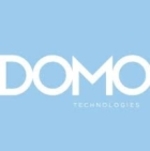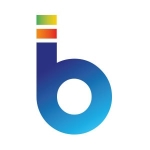
Consultant at a tech services company with 51-200 employees
Report Builder … the Red-Headed Stepchild of Self-Service BI Tools?
A conversation on Twitter earlier this week has inspired me to pose this question…Is Report Builder the “Red-Headed Stepchild” when it comes to the Microsoft Self-Service BI toolset? Report Builder doesn’t get much attention these days, for various reasons we’ll discuss below.
(Note: The perspective of this blog entry is Self-Service BI so Report Builder is the reference – however, everything stated is applicable to full-fledged Reporting Services as well.)
Is Report Builder Deprecated?
Nope! Report Models, however, are deprecated. As of SQL Server 2012, you can no longer create or update Report Models (SMDL files). You can continue to use Report Models currently, but it is recommended to move away from them as time allows. Report Builder itself is at version 3.0 and is a mature product.
Self-Service BI Tools
The primary set of Microsoft Self-Service BI tools includes Excel (+ add-ins for data modeling such as PowerPivot), Power View, and Report Builder. Some people actually wouldn’t include Report Builder in this list, but I do believe it has a valid place as one of the Self-Service BI tools (albeit, a smaller audience & used for specific purposes).
Drawbacks of Report Builder
- Learning curve / ease of use for report designer. There are a significant number of properties and options. This offers significant control over the output – the cost for this significant control is ease of use because all the options in Report Builder can be a bit overwhelming for the casual business user. However, it’s not overly difficult to use for technically adept users who enjoy working with reporting tools and data.
- Limited interactivity. While there are some interactive features (such as drill-down, drill-through, sortable columns), each has to be explicitly defined by the report designer. Report Builder isn’t dynamically interactive like Power View or even Excel – rather, Report Builder is far more suitable for fully formatted reporting needs.
- Longer to develop. There’s some things that can be done with Power View or Excel that are inherently more work to do in Report Builder. The first example that comes to mind is hierarchies – with Power View or Excel, you drop a hierarchy onto the row & the navigation up/down works; with Report Builder you’d have to set up what is shown vs. hidden and the toggle properties. This is not overly difficult to set up, but could be frustrating for someone just getting started with Report Builder.
- GUI support is limited. There is a drag & drop graphical interface for SQL Server and Analysis Services data sources (plus a couple of others). This limited support leaves the report designer writing query syntax sometimes – which is obviously not the most user-friendly for non-technical folks. Currently the nicest way for users to work with Report Builder is using a BISM data source (i.e., the data is stored in Analysis Services or PowerPivot). SQL Server (relational) can be ok for users to work with if the data sources are made to be understandable & easy to work with (ex: with reporting views or stored procedures) – this takes some effort from the IT Dept. or BI Center to make sure it’s made suitable for self-service.
Positives of Report Builder
- Native connectivity to many data sources, including BISM. The Microsoft BI framework is very different from other BI tools (such as Cognos or Business Objects) which require a metadata layer – i.e., a report model between the data source & the reporting tool. Microsoft permits tremendous flexibility here – in fact, you can natively send queries from Report Builder to a variety of databases including non-Microsoft. Power View is very limited in terms of accepted data sources, and Excel can be somewhat limited (unless you bring the data into an intermediary PowerPivot model first – PowerPivot offers great flexibility in this regard, but do realize you are storing the data redundantly).
- Significant formatting control. If you need a pixel-perfect highly formatted report, Report Builder is the tool for you. Ironically, this is the inverse of the “learning curve / ease of use” drawback listed above. With Excel you can exercise a lot of control over the look & feel of your report (except Pivot Tables – you have to use formulas if you need to "break” out of the Pivot Table). Power View has some text size control and some color schemes to choose from, but overall offers minimal user control over formatting (after all, it’s a data discovery tool meeting an entirely different need – and it is purposely trying to remain simple).
- Consistent RDL file format. If a business user starts a report in Report Builder and needs some help with it, one of the IT or BI folks can open the report using their tool of choice (BIDS or SSDT in Visual Studio), make some updates, and send it back to the user with the file format intact. The consistent format is also helpful if a report is being promoted from the Self-Service environment to the Corporate BI environment.
- Reusable elements. To facilitate Self-Service BI using Report Builder, things such as shared data sources (reusable data connections) are obvious but there are others as well. Shared datasets (reusable queries) can be really helpful to handle common things like Dates and Geography. Report parts (reusable charts, graphs, tables) can be helpful to display commonly used elements. Images can also be stored centrally for reuse. Setting up reusable elements does take some effort from the IT Dept. or BI Center though, but can improve the Self-Service user’s experience tremendously.
- Parameterization. Reports with a number of parameters (within reason of course) can sometimes be thought of as “guided ad-hoc analysis” because one report can yield many different combinations of results depending on parameter values. Report Builder handles parameterization well.
- Subscriptions and alerts. If you wish to have reports delivered to you at a predefined frequency or based upon a condition, then Reporting Services is the tool to make that happen.
- Export and RSS capabilities. Report Builder can export to many different file formats. It can also publish an RSS feed – this can be very useful for a business user to consume existing aggregated/calculated data that has been rendered by Report Builder without recalculating or reinventing anything. Utilizing published report data via RSS also helps with the elusive “one version of the truth” that’s a constant challenge.
- Integration with SharePoint. With a Report Builder report, you can view or edit the report directly from the SharePoint document library (with appropriate permissions of course). Alternatively, a Report Manager portal can be used (although it would be used in isolation from other BI tools and reports).
So, even though sometimes Report Builder seems to be the “Red-Headed Stepchild” I very much appreciate having the tool in our toolbox. I hope it’s alive and well for a long time.
Got any thoughts on this subject? Leave a comment … I’d love to hear your thoughts.
Disclosure: The company I work for is a Microsoft Partner
Disclosure: My company does not have a business relationship with this vendor other than being a customer.
BI Expert with 51-200 employees
SSAS Tabular Models: The Good, the Bad, the Ugly & the Beautiful
After working on a couple of serious tabular model projects, I’ve been talking to other BI practitioners lately about their thoughts regarding tabular model technology and I’m finding that there is little consensus among all these industry experts about which option to recommend for new BI projects. At SolidQ, I work with some of the most experienced Business Intelligence experts in the industry. At conferences and in discussion groups, there has been a lot of discussion about the choice between Analysis Services multidimensional models and the newer tabular semantic model technology introduced in SQL Server 2012. There are pros and cons for either side but I think there are some important factors to consider. Among some of the most experienced Analysis Services consultants, I have heard that some are primarily using and recommending tabular for most new projects and others are arguing that tabular offers little significant value over the tried-and-true multidimensional cubes and MDX script solutions.
As is typical for a newer product, the usability experience for the model designer isn’t perfect. In some ways, it’s different and just may take some getting used to, but in other ways there is clearly room for improvement. The question now is; do the advantages of tabular vs multidimensional outweigh the somewhat rocky design experience? I’m not taking sides in this comparison but merely offering an objective analysis of the state of tabular model option in SQL Server 2012 Analysis Services, Service Pack 1. I expect this product to go through changes so for future reference, this information is for the released product at the time of this posting in June of 2013.
The Good
-
The core VertiPaq (or xVelocity) query and aggregation engine is stable & reliable. Originally developed about five years ago and released with PowerPivot for Excel and SharePoint in SQL Server 2008R2 over three years ago, this technology has proven to be ready for serious use.
-
Under most conditions, for analytic reporting, data scanned and aggregated from an in-memory data structure performs faster than other conventional options; including relational and multidimensional storage.
-
Tabular can be less complex than multidimensional, OLAP SSAS. The core design and usage concepts are easier for both those who design models and for those use use them for analysis and reporting.
-
Tabular models can be easier & faster to implement because the model structure is simpler and there may be fewer steps in the design process.
-
DAX, the core calculation expression language for tabular models, is fairly easy to learn. Fundamental DAX expression concepts can be easier to understand than equivalent MDX commands used in multidimensional modeling and calculations.
The Bad
-
Comparing features, tabular can be hard to justify when compared to multidimensional. Traditional SSAS cubes still have more capabilities than tabular models and for someone who already has OLAP skills and background, tabular design is a new learning curve.
-
PowerPivot is a version 2 product. As such, it’s simple and fairly reliable in the majority of design scenarios. In some, mostly rare, cases, error handling and debugging capabilities aren’t as mature and robust as more tenured technologies like SSAS multidimensional or relational.
-
Tabular SSAS is a version 1 product. As such, it has a list of well-known design annoyances and features that could (and should) improve in the next product go-round.
-
The recommended design patterns & best practices, both from Microsoft development and support teams and from members of the expert practitioner community, are still emerging.
-
One model.bim file = one developer working at a time. A departure from the long-time SSAS project development environment where every object (such as data sources, dimensions and cubes) were defined in isolated files managed by the project; SSAS tabular manages all of the database objects in a single model definition file. The model designer treats the model is more of a black box than a solution comprised of independent objects. However, the fact is that most of the same objects we work with in multidimensional/cube projects are all defined as XML elements in this file. It can be opened and properties manipulated,and there are a growing number of third-party tools to provide enhancements. Regardless, it is one big project file tat would need to be checked-out in source code management as a single project asset.
-
The tabular SSAS support community is thriving but still small. A core group of trusted professionals from all over the world are the loudest voices right now. They promote tabular solutions and provide active and collective support for one another.
-
The DAX expression editor in PowerPivot & the Visual Studio-based SSDT designer is quirky. You have to know is strengths and weaknesses and be willing to use it in that context. It attempts to assists with code completion but in the end, it doubles-up brackets and duplicates, rather then replaces old code, that it suggests. No doubt that the experience will get better as enhancements are developed and released but we must live with a product today that is useful and reliable a lot of the time but, it leaves plenty of opportunity for improvements.
-
The entire tabular model must fit in memory. There’s no caching, swapping or distributed processing option for large models. This means that very large models need very large hardware and there is currently no scale-out option to distribute work loads or fail-over. Got a lot of data? Get a lot of memory.
The Ugly
-
After you get into serious data with 30, 40 or 50 tables and some complexity to your model, the version 1.0 SSDT tabular model designer can be cumbersome and error-prone. I’ve seen it stop responding and throw errors when there were no errors. I will say that it’s helpful and reliable most of the time but on occasion, when it falls down, I often save and close my work; shut down Visual Studio all together and the fire it back up.
-
My biggest peeve about the SSDT model designer is that all design work is performed while connected to the workspace database. This means that for every table and column rename,and for every single property setting change, this information is written to the model workspace database on the local SSAS tabular server, and after the changes have been committed, control is given back to the model designer.
-
Some key SSAS features are not currently supported. These include things like parent-child hierarchies, many-to-many relationships, cube actions and display folders. Actually, this is not entirely true; actions and display folders can be added using after-market tools (like BIDS Helper, available in the CodePlex library) and by hand-writing the XMLA script, but they are not currently supported through the SSDT model designer. There is simply a category of features that didn’t find their way into this first version of the product. There are work-arounds and methods to enable these capabilities but they’re not supported, or at least not to the the same degree as they are in multidimensional SSAS.
The Beautiful
-
There is no doubt that in-memory, tabular model technology is the promise of the future. It just makes sense. Several vendors have come to the same conclusion and are developing products following this paradigm. Oracle just made a big announcement about adding in-memory column store to their future 12C product.
-
Data residing and processed in memory is faster than data residing in disk. This is what VertiPaq does; whether implemented as PowerPivot, an SSAS tabular model or as a SQL Server column store, it works efficiently and elegantly without the complexities and overhead of indexes, partitions, file groups and other techniques typically used to optimize on-disk data stores.
-
Even though tabular is fairly new, many useful & valuable features are supported today and work well.
-
PowerPivot models upgrade seamlessly to tabular models. This provides a path for business users and IT professionals to author models in familiar tools (Excel or Visual Studio) and then promote them to a server hosted environment.
-
Tabular models are managed and stored by SQL Server Analysis Services! Although some components of the tabular engine and the designer are new and still have wrinkles to be ironed-out, the core product is based on the solid and time-tested foundation of SSAS. This means that many of the features not implemented now will be available in future builds.
-
Client applications that support SSAS multidimensional will also support tabular. In fact, any application built to work with SSAS cubes will natively work with PowerPivot and tabular as if it were a cube. This is because SSAS tabular uses the same data provider that understands both MDX & DAX queries.
Disclosure: The company I work for is a Microsoft Gold Partner
Disclosure: My company does not have a business relationship with this vendor other than being a customer.
Buyer's Guide
Microsoft Power BI
December 2025
Learn what your peers think about Microsoft Power BI. Get advice and tips from experienced pros sharing their opinions. Updated: December 2025.
879,371 professionals have used our research since 2012.
Consultant at a tech consulting company with 51-200 employees
Business Intelligence Forecasting in SQL and Cognos
Note: This article is an update of a presentation given when I was at the University of Oklahoma’s Health Sciences Center. At that time, I was using Cognos version 7.3. This article is updated for Cognos 10 and SQL Server Analysis Server 2012. Revisiting this subject ten years later, my opinion is that Microsoft has finally surpassed IBM Cognos.
Most businesses, including medical clinics, want some method for forecasting business trends. The Cognos BI powerplay presentation tools contain the tools needed for basic forecasting. The trick in getting accurate forecasting is select the correct algorithm.
I recommend trying the model against only a portion of your data, to see how closely forecasts the remaining data. For example, if you have 2 years worth of data, try entering only 18 months of data into the model and let it predict the final 6 months. Then you have some actual data with which to measure ‘fit’ of the prediction. The new Microsoft SQL tools mentioned below, allow training data and measuring fitness.
Forecasting SSAS vs Cognos
IBM Cognos Forecast Models:
The old Cognos website used to list more details about each model, but that has long since been eaten by IBM’s user un-friendly website. I’m sure a few of my friends still enjoy ‘Recreational Math’ magazine, so here are some algorithms to play with in your spare time.

For more details, read about the terms of service and limitations of liability on their forecasting algorithms pages.
Microsoft SQL Analysis Services
If you are using the Microsoft Business Intelligence stack, there are several data mining options in Analysis Services (SSAS). The SQL team has worked hard to lower the barriers to entry and learning curves for data mining. The Excel add-in makes the SSAS data mining models easily accessible to business users at the desktop. I will have more about these tools soon.
Again, for details and limitations, see the Microsoft articles on each algorithm.
Disclosure: My company does not have a business relationship with this vendor other than being a customer.
BI Expert with 501-1,000 employees
Taboo? Microsoft in Higher Education
In a recent post, I discussed the changes in the business intelligence landscape as outlined by Gartner in their 2013 Magic Quadrant. Today, I wanted to focus solely on Microsoft as a vendor in this space. Yes, I mentioned Microsoft – and I work in Higher Education!

In working with a number of higher education institutions over the years, I often hear direct concerns about “Microsoft.” In the academic world, we are concerned about the most open way of doing things. We like to share – and you may have noticed by the adoption of Sakai and the Open Source Portfolio (OSP).
The emergence of open-source tools was prevalent over the last few decades. You now see many organizations running miscellaneous versions of Linux, open source wiki tools, Drupal-type content management systems – and now many have implemented Google (Google Drive, Google Docs, GMail). If you mention “Microsoft” – you’d better start running. You’ll have someone from IT chasing after you pretty quickly – and not in a good way!
Ok – you’re not Jack Sparrow, so you can relax a bit! But, you can imagine the feelings of many of these IT organizations when you start to implement enterprise-level software that holds a significant cost and the source is proprietary. Think Sungard’s Banner (now Ellucian), or PeopleSoft, and maybe even Workday now in some cases. Somehow, Oracle has slipped through the cracks as many of these large ERP vendors require Oracle’s database platform. Oracle was also smart and acquired mySQL – so they have an almost natural support of the open source community. Oracle is an investment, too.
You’re probably asking – what’s your point? My point is that Microsoft isn’t bad. It’s actually very, very GOOD! Besides the educational licensing, and the obvious love for Microsoft Office (Excel, Word, PowerPoint, et al) – let’s look at some of the benefits of Microsoft’s SQL Server platform. Let’s start with a basic point that is often overlooked. It is a suite of tools, not simply a database platform. I have listed a basic table below, but you can read more on Microsoft’s website.
| Server components | Description |
|---|---|
| SQL Server Database Engine | SQL Server Database Engine includes the Database Engine, the core service for storing, processing, and securing data, replication, full-text search, tools for managing relational and XML data, and the Data Quality Services (DQS) server. |
| Analysis Services (SSAS) | Analysis Services includes the tools for creating and managing online analytical processing (OLAP) and data mining applications. |
| Reporting Services (SSRS) | Reporting Services includes server and client components for creating, managing, and deploying tabular, matrix, graphical, and free-form reports. Reporting Services is also an extensible platform that you can use to develop report applications. |
| Integration Services (SSIS) | Integration Services is a set of graphical tools and programmable objects for moving, copying, and transforming data. It also includes the Data Quality Services (DQS) component for Integration Services. |
| Master Data Services | Master Data Services (MDS) is the SQL Server solution for master data management. MDS can be configured to manage any domain (products, customers, accounts) and includes hierarchies, granular security, transactions, data versioning, and business rules, as well as an Add-in for Excel that can be used to manage data. |
The great part of purchasing Microsoft SQL Server is that these tools come out of the box – and are included with the license for the database platform. There are several different editions which provide more or less horsepower as your project requires, but this is an added bonus that Microsoft bundles these tools.

Here are a few thoughts from my experience and why I enjoy working with Microsoft BI tools:
Technical Benefits:
- Relatively easy to deploy and installation is wizard-based
- Learning curve to adopt SSRS and SSIS is reasonable in comparison with other tools
- Direct integration with Windows operating system and Active Directory (this is great if you have a nice active directory structure already in place; not so helpful if you do not).
- Direct integration with Team Foundation Server (TFS) for version control
- Platform is sophisticated enough to handle complex tasks (i.e. stored procedures, SSRS data driven subscriptions)
Functional Benefits:
- All-in-one solution (combine with SharePoint for full functionality)
- End-user tools are intuitive and within a familiar Microsoft interface
- SharePoint can be used to pull information together in a one-stop-shop
- Office integration (i.e. Excel, PowerPivot)
Cost Benefits:
- Educational and non-profit discounts are a nice way for Microsoft to give back.
- License costs, on average, are lower than combining multiple tools from multiple vendors (this always depends on your situation and the license agreements that you have in place).
- Total cost of ownership (TCO) tends to be lower. This is due to the license fees and also the availability of technical resources that are familiar with the Microsoft platform. Again, this is completely dependent on your situation, but this is what I have seen with other clients. It may also be indirect, but by having all of these tools with one vendor, you spend less time managing 4 or 5 invoices for maintenance and renewals as well. And, if you need to renegotiate anything – it is again done with a single vendor not 4 or 5.
My Favorite Features:
- SQL Server Management Studio (SSMS) – it seems silly, but this a great tool and I enjoy testing my queries within SSMS prior to loading them into SSRS. It has some really nice features built-in for ETL developers as well (i.e. the ability to script the creation/deletion of a table with a mouse click)
- SSIS Package Variables – I use them frequently to make dynamic filenames in my SSIS routines. They are flexible and allow SSIS routines to handle a number of complexities that would otherwise be very difficult to address.
- Data-driven subscriptions – this is a great way to deliver tailored content to your user base. Same report…different content. In a previous consulting organization, I used data-driven subscriptions to improve internal processes and implementation times for external projects.
- PowerPivot – Let’s be honest. It’s just cool! In-memory BI is a hot topic. We also like tools like Tableau and Qlikview.
Disclosure: My company does not have a business relationship with this vendor other than being a customer.
BI Expert with 501-1,000 employees
Cost-effective, all-in-one package for business intelligence
Pros
SQL Server is flexible and relatively straight-forward to deploy. It is fantastic that reports can be delivered via Report Manager without any additional license fees. Reports can also be placed on subscriptions with the Enterprise version of SQL Server. This allows different people to get the same report with data that is tailored to their perspective.
Cons
The product would be better if it came bundled with Microsoft SharePoint. Some of the more advanced business intelligence dashboards must be run through SharePoint (SharePoint dashboards, PowerView, etc.). We also found that SharePoint Dashboards are time intensive to design.
My experiences
Getting back to the license costs, we have found SQL Server to be an effective tool at a very good cost. Compared to purchasing 2 or 3 other products, SQL Server is a very nice all-in-one package (SQL Server database platform - MS SQL, SQL Server Integration Services - SSIS, SQL Server Reporting Services - SSRS, SQL Server Analysis Services - SSAS). The educational discount is also very helpful for K-12 or Higher Education customers. Installation and deployment was relatively straightforward. There is a slight learning curve on SSRS, but easy to pick-up.
Business Metrics
If you are looking at cost savings alone, Microsoft SQL Server will pay for itself when compared an Oracle/Informatica/IBM Cognos solution. In a direct comparison of one-time software fees and ongoing annual support fees, Microsoft SQL Server will come out much cheaper. I would also argue that the software features are similar between the tools as well - so you're not foregoing functionality to save cost. We have found that BI developers are also easier to find on the Microsoft platform - which over time - may lead to lower TCO.
What needs improvement?
It would be nice if the Report Manager portal interface were more updated. It is much nicer to deploy the reports through the "shiny" SharePoint interface, but it is not as integrated with SSRS as the Report Manager.
Alternatives Vendors
Oracle, IBM Cognos, Informatica
Which others did you consider?
Disclosure: My company does not have a business relationship with this vendor other than being a customer.
Just like MySQL, SQL is very easy to use or program when creating databases. In fact, with some knowledge of either one of the database programs, one can easily use the other without much difficulties.
VP Product at a tech company with 51-200 employees
The Gartner Magic Quadrant for Business Intelligence says that Microsoft BI's overall costs are consistent with other Megavendors. Do you agree?
The Gartner Magic Quadrant for Business Intelligence says that most companies chose Microsoft BI because of low license cost and overall low cost of ownership. However, while the total ownership costs is low for a per user basis, because of implementation and ongoing development costs it is consistent with other large vendors.
Are you a Real User of Microsoft BI? Have you found this to be the case in your organization?
If you are a user or are evaluating Microsoft BI, add your comment below or write your own review. Share your opinion with our community!
Disclosure: My company does not have a business relationship with this vendor other than being a customer.
I do agree with the Gartner Magic Quadrant for BI. Although the licensing costs might be low and Microsoft products can come with incentives depending on the client in question, it is important to consider the general costs that span long term use of the product. I also agree with Robert Goodman on the high availability of people resources when it comes to Microsoft BI products. Microsoft is a big brand worldwide with its training resources available not just online but also in many schools across the globe, hence finding a person knowledgeable in Microsoft BI is much easier than any other brands in the market. Back to Gartner; although Microsoft has certain cost aspects of their BI products down, the costs incurred during implementation stages and continuously as the product is used definitely raises the initial costs and thus making the cost of Microsoft BI products consistent with that of BI tools from other brands.
Marketing at a tech consulting company with 51-200 employees
Microsoft BI vs. QlikView
Disclosure: My company is a Microsoft Partner.
The use of databases has long been an art of managing information and creating informed practices in the computing world. But in recent times, with the advent of Data Warehouses, new methods of intelligence have been possible to embed into these erstwhile databases and make them extremely productive meeting a host of Business intelligence purposes both in the Government and Corporate Information worlds.
However, here it is important to go a little into the history of Database Management and how Databases have said to be have been evolving over the years. The first known databases, existed as i) File systems then came the ii) The Network Models then the iii) Hierarchical models and then the iv) The Relational Models and so on v) Object oriented Databases and finally vi) Object Relational Database Systems.
Database gurus, in the United States, now believe that Object Relational Systems are here to stay especially with modern data-sets that are very huge and or that which, are growing very fast! Can only or usually be best comprehended alone using Data Visualization (DV).
Again, having an ability to interact with data through visual drill-down capabilities and dashboards make it absolutely necessary for the latest Data Visualization systems to make ample use of Object Relational Database Systems as their back bends.
When it comes to assuming intelligence from a business warehouse, there are a multitude of interests that these Systems will have to cater to the business owner and or designated authorities in companies as the business world increasingly moves into a transparent and hectic horizon of new age realities, where always intelligence is key.
Some of the options that managers would want the BI systems to cater include new ways of drilling down on keywords, Key Performance Indicators (KPI), metrics leading to better searches, be able to easily comprehend data, preference on visual drill down capabilities, able to monitor Business transactions and being a highly interactive platform with all the right Data Visualization protocols set to make them enabled for use over the Internet.
However, in this document we are attempting a comparison between two of the very famous Data Visualization tools namely, QlikView and Microsoft BI mainly focusing on their salient features with brief comments.
There is a wide spread confusion amongst people in the DV markets in confidently answering as to which tool is the best Data Visualization product?
The below are 2 key factors for tool selection that are immediately obvious:
- Which makes it easy to comprehend the data
- Price-performance
Here it is important to remind ourselves that products only vary in their reasons for importance in comparison to other products, for e.g.
a) A product may have the best web client and analytical functionality.
b) The other may have the best ability to interact with the back end i.e. the data sets or the OLAP cubes etc.
So, facts about the product comparison between QlikView and Microsoft BI tool go about highlighting the features of both the products one after another as described below:
To being with, QilkView is seen by many as the best visualization product for interactive drill-down capabilities. But, QlikView is increasingly seen as expensive with a third of its customers according to a survey feeling this as a hindrance to its wide spread use.
There are serious flaws in the pricing model as also a larger deployment necessary to more users that are not rendering it possible for the investment of RAM required to support the increasing numbers of concurrent users.
Also, users find QlikView’s strengths lie in its user-driven approach to BI and say that, its ease of use lies in its intuitive interface. However, critics feel that QlikView has no expansive product strategy beyond its current offering.
Though it has a roadmap for incremental improvements to the current product, many feel that QlikView has not laid out a clear vision elucidating how it will maintain a sustainable competitive advantage.
Despite all this, analysts believe that QlikView still delivers one among the best performance in the market.
On the other hand, Microsoft BI platform provides better price-performance ratio and works good as a backend for DV (with release of SQL Server) or for people who wish to build own frontend DV. It also performs excellently on Enterprise readiness and long-term viability.
Since the Partners are key to SMB market it is always safe when it comes to Long-term viability with Microsoft as they are 35+ years into the Global market which is a direct advantage over other tools.
Microsoft is also the pioneer of the Visualization business in the IT industry, being the original inventor of Windows and so when it comes to business Interactive Visualization, they have an edge.
Again, most users value Visualization over Modeling Development – therefore, the Visual environment of consulting excels in interest over their competitors, i.e. their UI & set of Visual Controls that integrate Data Visualization components in toto.
It also scores a point when it comes to interactive visualization to match standards and metrics set as necessary by global delivery model along the above lines.
Disclosure: My company does not have a business relationship with this vendor other than being a customer.
I totally agree with the comparison. In my opinion, QlikView needs fewer tech people than the same solution created with the Microsoft platform. QlikView's scripting and importing capabilities are a little clunky, but once the user gets past that, things aren't very difficult.
BI Expert with 1,001-5,000 employees
Each solution has its pros and cons which are largely dependent on the target organisation’s existing software, infrastructure and skill set
Last year ServiceNow released ODBC access to their database, enabling customers to produce their own high quality reporting.
As direct reporting from ServiceNow is in increasing demand, I thought I’d put together a brief overview of the more popular choices of Reporting Software on the market.
Of course, if anyone has experience of any others, or wants to add to (or contradict!) my views, please feel free to post.
MS SQL Reporting Services (SSRS)
MS SQL Reporting Services is part of the MS BID package of Business Intelligence software but is a capable piece of reporting software in its own right which produces professional results.
But its main selling point is that it is not sold! If you already have MS SQL Server, it is free. This is fantastic news for software of this calibre. And because SSRS belongs to a suite of programs within SQL Server, there is no extra cost to schedule reports to run at set times automatically.
Report development in SSRS is quite SQL heavy, which is great for DBAs and programmers, not so much for people used to Excel as a reporting tool.
Of course, the flip side of it being free if you already have MS SQL Server is that it is expensive to buy a database just to get the free reporting software.
Because SSRS is intended for use with a suite of other software, it can struggle to do some of the more complex things that other programs in this list can as it is not a full solution in its own right. This can lead to a ‘bitty’ architectural solution with functionality being spread out without any apparent order.
SSRS is primarily designed for use with MS SQL Server. As a result, pointing it at over databases can be trickier than the other software in this list (who were created independently of any particular database).
Hiring SSRS expertise can be difficult as consultants tend to be DBAs, rather than SSRS specialists and are in high demand.
Business Objects
‘Business Objects’ tends to refer to an actual suite of software which together form an impressive toolset for data manipulation and display. The Business Objects component itself is focused on taking the tables from a database and transforming them into a structure ideal for reporting: called a Universe.
With the latest version of Business Objects there is a choice of Web Intelligence (WebI) and Crystal Reports for Enterprise to actually cut and display the data gathered in the Universe.
(Older versions of BO have Desktop Intelligence, but I strongly recommend avoiding this option, it is not future proof and produces reports that just look dated.)
Crystal Reports is covered as a separate solution later, but viewed purely as a means to report on a Universe, it is a match for WebI and arguably better in some respects. But Business Objects and WebI have been used together for longer and most BO developers are also WebI developers, whereas Crystal Reports is often a separate skill set.
Most of the shortcomings in WebI functionality is covered by the work already done when developing the Universe.
One of the best things about a Universe is that all the statistics you want to create can be done in one place and then included in reports as needed. There is no duplication of effort that tends to occur in standalone reporting and a standardisation of reporting metrics is enforced automatically.
Scheduling reports is not a problem, as the scheduling software is included within the standard Business Objects suite of products.
However, this standardisation can also be a hindrance. Professional level ITIL reporting often requires a very flexible approach to data interrogation to cover certain measures. Often some measurements are at logical odds with other measures based on the same data. This is where Business Objects can get mired down trying to accommodate all requirements in one place.
Even with free software (and Business Objects is far from free!) implementing an ITIL reporting solution costs money. Expertise usually has to be hired in, time and money is spent on requirements gathering, hardware and so on. Setting up a Business Objects Universe and then a complementary suite of reports can take weeks or even months.
This can be too long a wait for a business eager to give their managers the information they need to work at full capacity. This is a shame, as the table structure of the ServiceNow database is so well thought out there is almost no need for a Universe anyway beyond the aforementioned efficiency of effort.
Crystal Reports
Crystal Reports can report from virtually any data source including of course, the ServiceNow ODBC, is quick to develop with and can produce a wide variety of reporting styles.
Crystal’s inbuilt scripting language allows a huge amount of control though can take some time to learn for those new to programming.
Crystal Reports is hugely popular and used across all business sectors and is versatile enough to do just about any job. This versatility can also be a problem and without proper work practices in place a suite of Crystal Reports can become an unmaintainable mess.
The main negative thing for Crystal Reports is that it requires a separate piece of scheduling software to automate reporting. Whichever scheduling software is chosen, be sure to thoroughly test it within your business before deployment, especially the security if you intend distributing reports outside your own intranet.
The charting can also be a bit limiting and is starting to look a little dated now, but still crisp and clear.
Another possible minus for Crystal Reports is that if you do not have the skills in-house already, it can be tricky to hire an effective consultant. Unlike SSRS and Business Objects developers, who tend to come from a DBA or programmer background, a large percent of Crystal Reports consultants started in office admin jobs and tend not to have the technical experience needed to solve the more difficult questions.
Xcelsius / Crystal Visualation / SAP Dashboards
This product of many names was originally developed as an add-on to MS Excel and still uses Excel for much of its underlying functionality.
The result is reporting software with a shallow learning curve which produces gorgeous, interactive looking Dashboards that can be easily exported and distributed online.
Of course, there is a downside, or two.
The main one is that plugging Xcelsius directly into databases is a pain. It does not have that underpinning ODBC foundation like the other products in this list and data must either be piped in via another product entirely or through a third party component that plugs straight into Xcelsius.
The good news on this front is any company using ServiceNow probably has some good Java developers at their disposal that can develop Web services to connect Xcelsius to the database.
On a final note, anyone using Business Objects and/or Crystal Reports should add Xcelsius to their arsenal. It integrates well will both software and is definitely worth the effort in this case, both for dashboard designs and more flexible/nicer looking charting in standard reports.
JasperReports
This software is not really in the same league as the above products in many respects and may look like the odd one out.
But it does have a number of strong benefits in its favour:
1. Very capable software and produces professional results to challenge any other product in this list.
2. It is free.
3. Very, very similar to Crystal Reports, so similar that a Crystal Reports expert can quickly get to grips with JasperReports.
4. Java based and can be distributed through your organisation with relative ease.
JasperReports is definitely worth a look for any serious ServiceNow reporting implementation.
Summary
All of the above software has its own pros and cons which are largely dependent on the target organisation’s existing software, infrastructure and skill set. With this in mind, I cannot recommend a specific piece of software, but am happy to answer any questions I can.
Disclosure: My company does not have a business relationship with this vendor other than being a customer.
It is completely true that while a certain BI product (or any other product for that matter) can work for a particular business, it might fail in another. This is due to the fact that a perfect solution for any business is influenced by various factors such as infrastructure that vary from one company to another. Therefore, businesses should not just pick the Microsoft BI tool for their needs but consider other options that would work best for them to achieve maximum output.
Buyer's Guide
Download our free Microsoft Power BI Report and get advice and tips from experienced pros
sharing their opinions.
Updated: December 2025
Popular Comparisons
Tableau Enterprise
Teradata
IBM Cognos
Amazon QuickSight
SAP Analytics Cloud
SAP BusinessObjects Business Intelligence Platform
Oracle OBIEE
MicroStrategy
Oracle Analytics Cloud
QlikView
TIBCO Spotfire
ThoughtSpot
Buyer's Guide
Download our free Microsoft Power BI Report and get advice and tips from experienced pros
sharing their opinions.
Quick Links
- BI Reports for business users - which BI solutions should we choose?
- Business users moving from Tableau to MS Report builder
- Is Power BI a complete platform or only a visualization tool?
- What are the key advantages of OBIEE compared to Microsoft BI?
- What Is The Biggest Difference Between Microsoft BI and Oracle OBIEE?
- Is Microsoft Power BI good for an ETL process?
- How would you decide between Microsoft Power BI and TIBCO Spotfire?
- Is it easy to extract data from Oracle Fusion into Power BI?
- PowerBI or SyncFusion - which is better?
- What challenges to expect when migrating multiple dashboards from TIBCO Spotfire to Microsoft Power BI?

















I am a fan of Microsoft and totally love this write-up. Thanks Robert. Giving back to education and organizations that run for non-profits is a good way of giving back to the society at large.